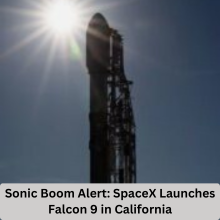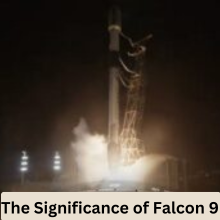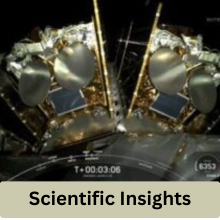
On a crisp Saturday night, SpaceX made headlines once again with the launch of its Falcon 9 rocket from the Vandenberg Space Force Base in Santa Barbara County. This mission, known as the OneWeb Launch 20, is a significant step in advancing satellite technology and connectivity. But as thrilling as rocket launches are, they often come with their own set of challenges—chief among them, the warning of sonic booms that residents in the area might experience.
Launch Details
The Falcon 9 lifted off precisely at 10:13 p.m. PST, drawing the attention of space enthusiasts and curious onlookers alike. This particular launch aimed to deploy satellites into low-Earth orbit, contributing to the growing constellation of OneWeb’s communications network. Departing from Space Launch Complex 4 East, Falcon 9 was set to return to Landing Zone 4 at Vandenberg approximately eight minutes later. The live stream of the event allowed many to witness this technological marvel in action.
Sonic Boom Warning
Prior to the launch, SpaceX issued a cautionary statement informing residents of Santa Barbara, San Luis Obispo, and Ventura counties about the possibility of sonic booms. A sonic boom occurs when an object travels faster than the speed of sound, creating a loud noise akin to a thunderclap. This phenomenon can startle those on the ground, and how strongly it’s felt often depends on various atmospheric conditions.
The Significance of Falcon 9
What sets Falcon 9 apart from other rockets? It’s hailed as the world’s first orbital-class reusable rocket. This groundbreaking design not only makes space travel more sustainable but also significantly reduces costs. By landing back on Earth instead of falling into the ocean, SpaceX can refurbish and reuse these rockets, paving the way for more frequent and economical space missions.
Environmental Concerns
While technological advancements are exciting, they don’t come without controversy. Sonic booms have sparked debates, especially in California, where the Coastal Commission recently denied SpaceX’s request to increase the number of launches to 50 per year. Environmental advocates have voiced concerns over potential impacts on local wildlife. With the noise created by the rockets, there’s apprehension about how it might disrupt marine life, birds, and other animals in the vicinity.
Public Reactions
Residents have had mixed feelings about the launches. For many, the sonic booms can be startling. One local, Mikayla Shocks from Camarillo, shared her experience: “One time, I thought a car hit my house. It’s felt by everyone. We hear the boom. My dog freaks out.” Such anecdotes highlight the tangible effects these launches have on daily life, blending excitement with a touch of trepidation.
Scientific Insights
Research indicates that while some animals may flee from the noise of a sonic boom, they typically return once it subsides. However, scientists warn that the long-term effects on wildlife are still largely unknown. Duncan Leitch, a professor of integrative biology at UCLA, noted potential declines in fish populations due to disturbances from the noise, which could ripple through the ecosystem.
Also read: SNL’s Cold Open Surprise: Alec Baldwin Ditches Trump for This
Political Ramifications
The controversy surrounding the launches has also entered the political arena. The California Coastal Commission’s decision to limit SpaceX’s launch frequency has not gone unnoticed. SpaceX responded with a lawsuit against the commission, alleging “naked political discrimination.” This legal battle is rooted in concerns that the commission’s decisions may be influenced by personal biases, including remarks about Elon Musk’s political affiliations.
Support from Political Figures
In an unexpected turn, California Governor Gavin Newsom expressed his support for Musk and SpaceX, stating, “I’m with Elon. I didn’t like that.” His comments reflect a broader debate about the intersection of politics and technological progress, emphasizing the complexities involved in regulating space exploration.
The Future of SpaceX Launches
As SpaceX continues its endeavors, many eyes are on the future of its launch schedule. Upcoming missions promise to expand satellite networks and enhance global connectivity. However, the ongoing legal and environmental discussions could shape how these missions are executed. Will regulations evolve to accommodate more frequent launches, or will community concerns take precedence?
Also read: Texas Turns to Arch Manning: Did He Spark a Comeback?
Conclusion
SpaceX’s recent launch of the Falcon 9 from Southern California serves as a fascinating example of the advancements in aerospace technology and the challenges that accompany them. As we balance innovation with environmental and community considerations, it’s essential to engage in open dialogues. The future of space exploration is bright, but it’s also complicated. With every launch, we must consider not just the technology, but the world it impacts.
FAQs
What is a sonic boom?
A sonic boom is a loud noise created when an object travels faster than the speed of sound, often experienced as a thunder-like sound.
How does Falcon 9’s reusability benefit space travel?
The reusability of Falcon 9 reduces costs and increases the frequency of launches, making space more accessible and sustainable.
What wildlife is affected by sonic booms?
Sonic booms can impact various wildlife, including marine life, birds, and terrestrial animals, potentially causing stress or changes in behavior.
What is SpaceX’s legal standing against the Coastal Commission?
SpaceX has filed a lawsuit against the California Coastal Commission, arguing that its decisions are influenced by political bias rather than scientific or environmental considerations.
How do local residents cope with sonic booms?
Many residents adapt by understanding the schedule of launches and preparing for the noise, while some experience anxiety or distress when a sonic boom occurs.

